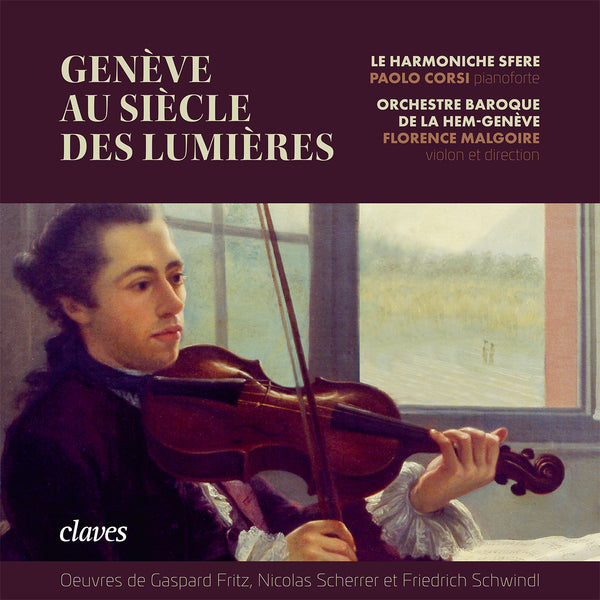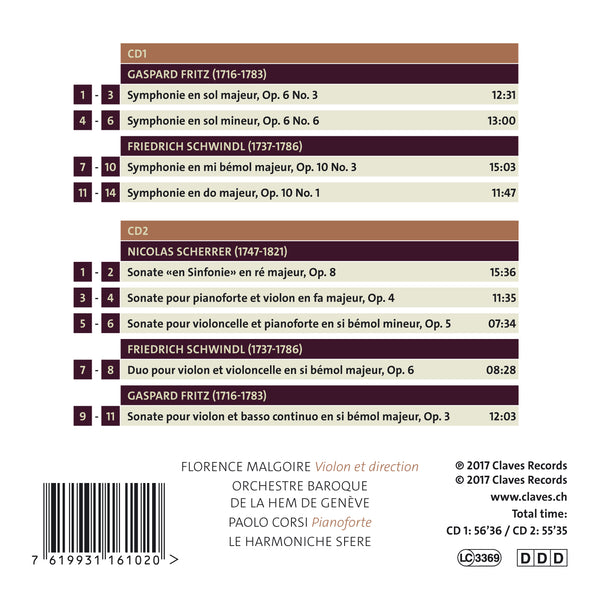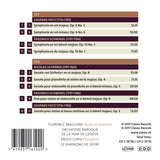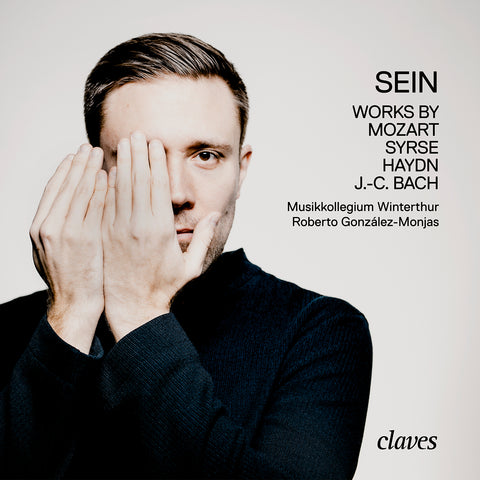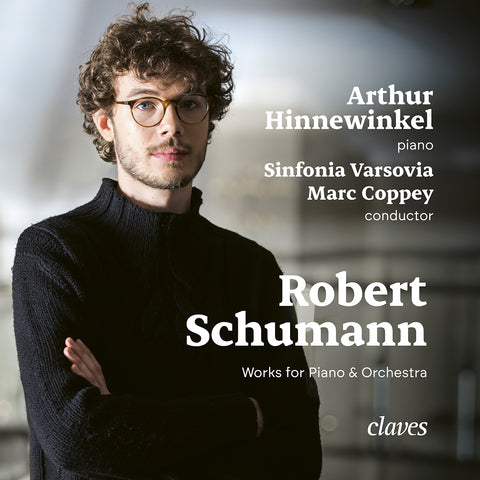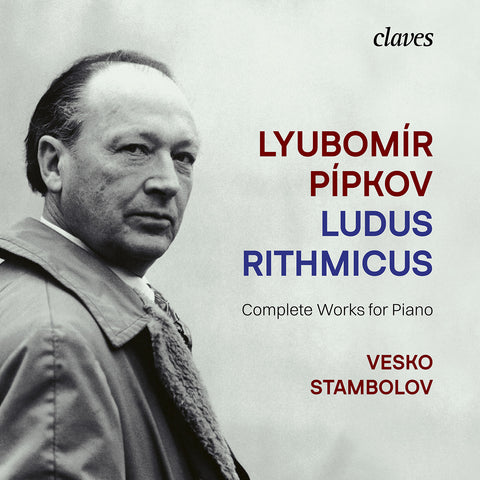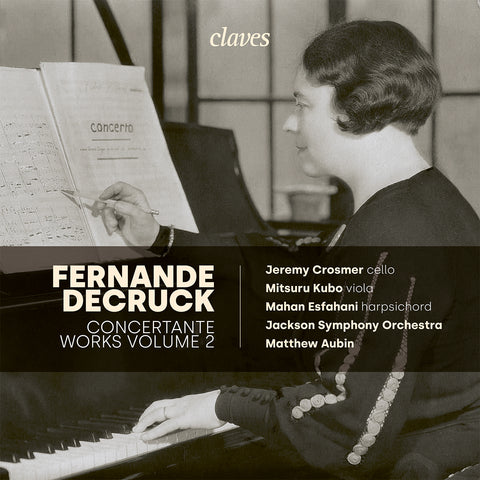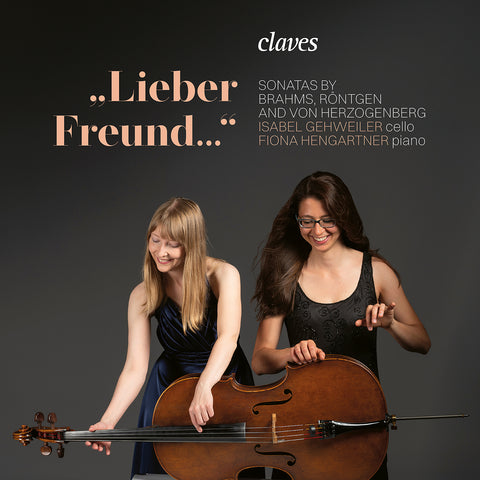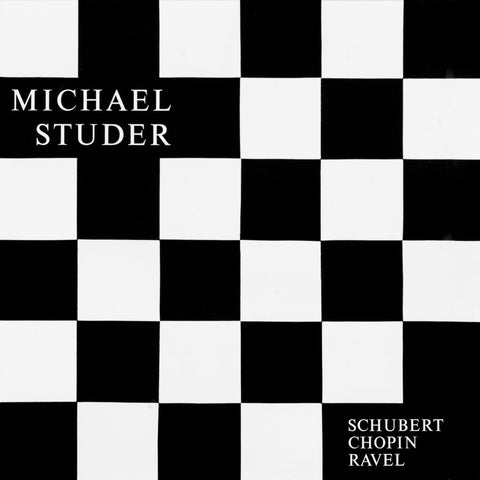(2017) Genève au Siècle des Lumières - Orchestre Baroque de la HEM de Genève / Florence Malgoire, violon et direction
Category(ies): Chamber Orchestra Rarities
Instrument(s): Cello Flute Fortepiano Harpischord Oboe Violin
Main Composer: Gaspard Fritz
Orchestra: Orchestre Baroque de la HEM de Genève
Conductor: Florence Malgoire
CD set: 2
Catalog N°:
CD 1610/11
Release: 24.11.2017
EAN/UPC: 7619931161020
- UPC: 190374960458
This album is now on repressing. Pre-order it at a special price now.
CHF 24.00
This album is no longer available on CD.
This album has not been released yet. Pre-order it from now.
CHF 24.00
This album is no longer available on CD.
CHF 24.00
VAT included for Switzerland & UE
Free shipping
This album is no longer available on CD.
VAT included for Switzerland & UE
Free shipping
This album is now on repressing. Pre-order it at a special price now.
CHF 24.00
This album is no longer available on CD.
This album has not been released yet.
Pre-order it at a special price now.
CHF 24.00
This album is no longer available on CD.
CHF 24.00
This album is no longer available on CD.
GENÈVE AU SIÈCLE DES LUMIÈRES - ORCHESTRE BAROQUE DE LA HEM DE GENÈVE / FLORENCE MALGOIRE, VIOLON ET DIRECTION
Musicians And Amateurs
Musical tastes and practices in Geneva in the 17th and 18th centuries
Following the Protestant Reform of the 16th century, Geneva became a recognized intellectual and religious centre. Attracting an important community of foreign nobility, the city did not stray from European artistic trends. Itinerant musicians, amateurs and dancing masters were essential actors of the transmission of musical practices as required by proper education.
In the middle of the 17th century, Genevese amateurs, travelers and foreign nobles congregated in “music concerts”. During one of these, forty young men from good families decided, in 1717, to found a concert society that would soon have at its disposal a converted hall in the Town Hall, where, for over a century, Genevese musicians and passing artists would perform. The city could now count on an orchestra, imperative for the interpretation of the contemporary repertoire, but also for welcoming important hosts, celebrating a royal birth or wedding in France, and shortly for playing fashionable comic operas. Whereas the theatre piqued the ire of moralists, music was never disputed. Furthermore, from the dawn of the 18th century, clergymen supported initiatives to establish music schools and even considered the rehabilitation of organs in churches.
Far from limiting itself to patrician salons, musical practice spread amongst the middle class and the world of well-to-do artisans, offering work opportunities to music and dance masters, instrument makers, even music engravers. Geneva’s geographical situation, at the cross-roads of the great European routes, as well as its prosperity, account for the visit of well-known musicians who found here an opportunity to play for or teach amateurs who, if the high quality of certain musical libraries is to go by, were very well informed about music of their time. Coming from various countries and cultures, these musicians brought their cultural knowledge and artistic language to local artists, thus contributing to the development of a flourishing musical life on par with the great European stylistic trends.
Gaspard Fritz, Nicolas Scherrer and Friedrich Schwindl, three actors of the musical life in Geneva.
***
Gaspard Fritz (1716-1783) is the most famous of the Genevese musicians. Born in Geneva, composer and violinist, he first studied with his father, Philippe Fritz, musician who came from Hanover, and later with Giovan Battista Somis in Turin, before returning to his home town where he spent his whole life, except for a journey to Paris. Acknowledged Master, he became a professor, composer and, foremost, violin virtuoso. Between 1742 and 1772 he published, in Geneva, Paris and London, five volumes of sonatas and symphonies which, endorsed by Locatelli and Handel, earned him international fame.
Nicolas Scherrer (1747-1821) came from a family of musicians that were particularly active in Genevese musical life in the 18th century. His father, originally from Saint-Gallen, was the renowned organ factor Samson Scherrer, who built, among others, the organs installed in Saint-Pierre Cathedral in 1757 and in the Fusterie church in 1763. His brother Jean-Jacques was, like himself, composer, music master and organist; as for his sister Suzanne, she ran a music engraving workshop at the Bourg-de-Four. Nicolas Scherrer is a figure of the Genevese musical life who is happily being rediscovered nowadays.
Friedrich Schwindl (1737-1786) was probably born in Amsterdam. Violinist, flautist and pianist, he first came to attention in Germany where he obtained prestigious placements (Konzertmeister of the Margrave of Wied-Runkel, chamber musician of the Count of Colleredo) before setting off on a journey through Europe. Arriving in Geneva around 1773, he remained there until 1778, being extremely active as music master, composer and often performing in public concerts. Although Schwindl is mostly known for his symphonies - which were performed in the “Concerts Spirituels” in Paris - his chamber music works show great refinement and belong to the musical aesthetics of the period, between Baroque and Classicism.
Corinne Walker
Issue d’un projet de recherche de la Haute école de musique de Genève financé par le Fonds stratégique de la HES SO, cette publication a également bénéficié du soutien de la Loterie Romande.
Cet enregistrement accompagne un livre, Musiciens et amateurs de Corinne Walker, édité par La Baconnière/Arts. ISBN 9782940462148
Enregistré à la Salle de Châtonneyre, Corsier, Suisse, mai 2016 (musique de chambre) et Studio Ernest Ansermet, Geneve, Suisse, juin 2016 (orchestre)
***
Le Harmoniche Sfere
Violon, Denitsa Kazakova
Violoncelle, Esmé de Vries
Pianoforte, Paolo Corsi
(2017) Genève au Siècle des Lumières - Orchestre Baroque de la HEM de Genève / Florence Malgoire, violon et direction - CD 1610/11
Musicians And Amateurs
Musical tastes and practices in Geneva in the 17th and 18th centuries
Following the Protestant Reform of the 16th century, Geneva became a recognized intellectual and religious centre. Attracting an important community of foreign nobility, the city did not stray from European artistic trends. Itinerant musicians, amateurs and dancing masters were essential actors of the transmission of musical practices as required by proper education.
In the middle of the 17th century, Genevese amateurs, travelers and foreign nobles congregated in “music concerts”. During one of these, forty young men from good families decided, in 1717, to found a concert society that would soon have at its disposal a converted hall in the Town Hall, where, for over a century, Genevese musicians and passing artists would perform. The city could now count on an orchestra, imperative for the interpretation of the contemporary repertoire, but also for welcoming important hosts, celebrating a royal birth or wedding in France, and shortly for playing fashionable comic operas. Whereas the theatre piqued the ire of moralists, music was never disputed. Furthermore, from the dawn of the 18th century, clergymen supported initiatives to establish music schools and even considered the rehabilitation of organs in churches.
Far from limiting itself to patrician salons, musical practice spread amongst the middle class and the world of well-to-do artisans, offering work opportunities to music and dance masters, instrument makers, even music engravers. Geneva’s geographical situation, at the cross-roads of the great European routes, as well as its prosperity, account for the visit of well-known musicians who found here an opportunity to play for or teach amateurs who, if the high quality of certain musical libraries is to go by, were very well informed about music of their time. Coming from various countries and cultures, these musicians brought their cultural knowledge and artistic language to local artists, thus contributing to the development of a flourishing musical life on par with the great European stylistic trends.
Gaspard Fritz, Nicolas Scherrer and Friedrich Schwindl, three actors of the musical life in Geneva.
***
Gaspard Fritz (1716-1783) is the most famous of the Genevese musicians. Born in Geneva, composer and violinist, he first studied with his father, Philippe Fritz, musician who came from Hanover, and later with Giovan Battista Somis in Turin, before returning to his home town where he spent his whole life, except for a journey to Paris. Acknowledged Master, he became a professor, composer and, foremost, violin virtuoso. Between 1742 and 1772 he published, in Geneva, Paris and London, five volumes of sonatas and symphonies which, endorsed by Locatelli and Handel, earned him international fame.
Nicolas Scherrer (1747-1821) came from a family of musicians that were particularly active in Genevese musical life in the 18th century. His father, originally from Saint-Gallen, was the renowned organ factor Samson Scherrer, who built, among others, the organs installed in Saint-Pierre Cathedral in 1757 and in the Fusterie church in 1763. His brother Jean-Jacques was, like himself, composer, music master and organist; as for his sister Suzanne, she ran a music engraving workshop at the Bourg-de-Four. Nicolas Scherrer is a figure of the Genevese musical life who is happily being rediscovered nowadays.
Friedrich Schwindl (1737-1786) was probably born in Amsterdam. Violinist, flautist and pianist, he first came to attention in Germany where he obtained prestigious placements (Konzertmeister of the Margrave of Wied-Runkel, chamber musician of the Count of Colleredo) before setting off on a journey through Europe. Arriving in Geneva around 1773, he remained there until 1778, being extremely active as music master, composer and often performing in public concerts. Although Schwindl is mostly known for his symphonies - which were performed in the “Concerts Spirituels” in Paris - his chamber music works show great refinement and belong to the musical aesthetics of the period, between Baroque and Classicism.
Corinne Walker
Issue d’un projet de recherche de la Haute école de musique de Genève financé par le Fonds stratégique de la HES SO, cette publication a également bénéficié du soutien de la Loterie Romande.
Cet enregistrement accompagne un livre, Musiciens et amateurs de Corinne Walker, édité par La Baconnière/Arts. ISBN 9782940462148
Enregistré à la Salle de Châtonneyre, Corsier, Suisse, mai 2016 (musique de chambre) et Studio Ernest Ansermet, Geneve, Suisse, juin 2016 (orchestre)
***
Le Harmoniche Sfere
Violon, Denitsa Kazakova
Violoncelle, Esmé de Vries
Pianoforte, Paolo Corsi
Return to the album | Read the booklet | Composer(s): Gaspard Fritz | Main Artist: Florence Malgoire
STUDIO MASTER (HIGH-RESOLUTION AUDIO)
Cello
Chamber
Florence Malgoire
Flute
Fortepiano
Friedrich Schwindl
Gaspard Fritz
Harpsichord
High-resolution audio - Studio master quality
In stock
Nicolas Scherrer
Nordklang Musikproduktion
Oboe
Orchestra
Orchestre Baroque de la HEM de Genève
Rarities
Releases 2015 - 2017
Violin
World Premiere Recording
Cello
Chamber
Florence Malgoire
Flute
Fortepiano
Friedrich Schwindl
Gaspard Fritz
Harpsichord
High-resolution audio - Studio master quality
In stock
Nicolas Scherrer
Nordklang Musikproduktion
Oboe
Orchestra
Orchestre Baroque de la HEM de Genève
Rarities
Releases 2015 - 2017
Violin
World Premiere Recording







